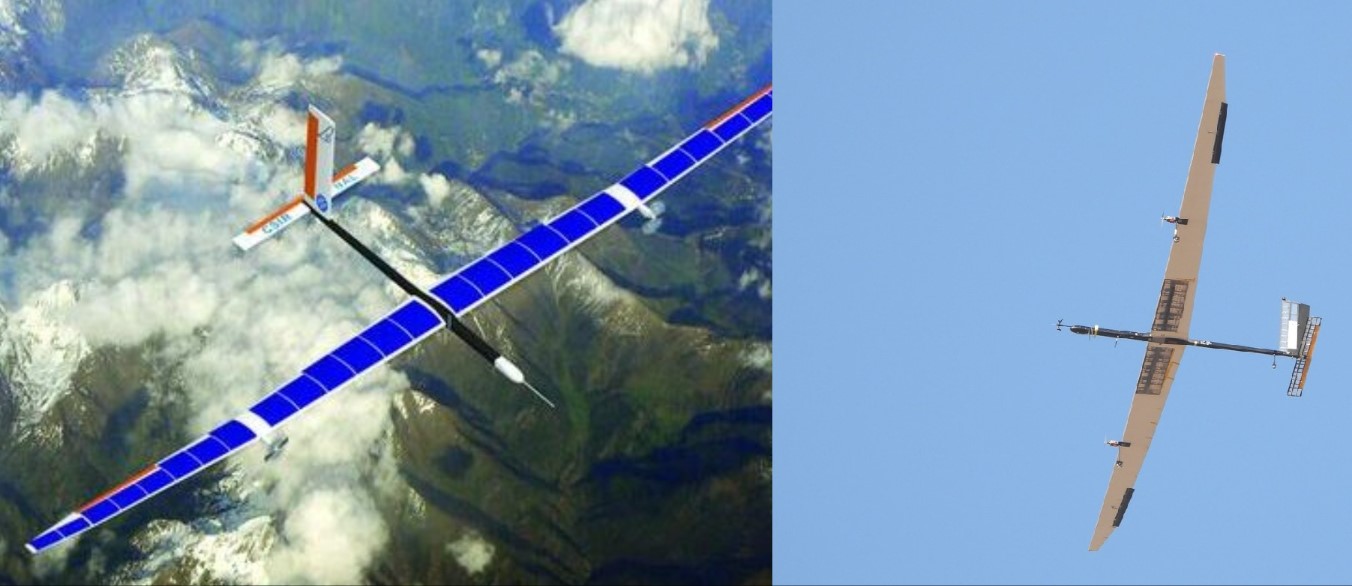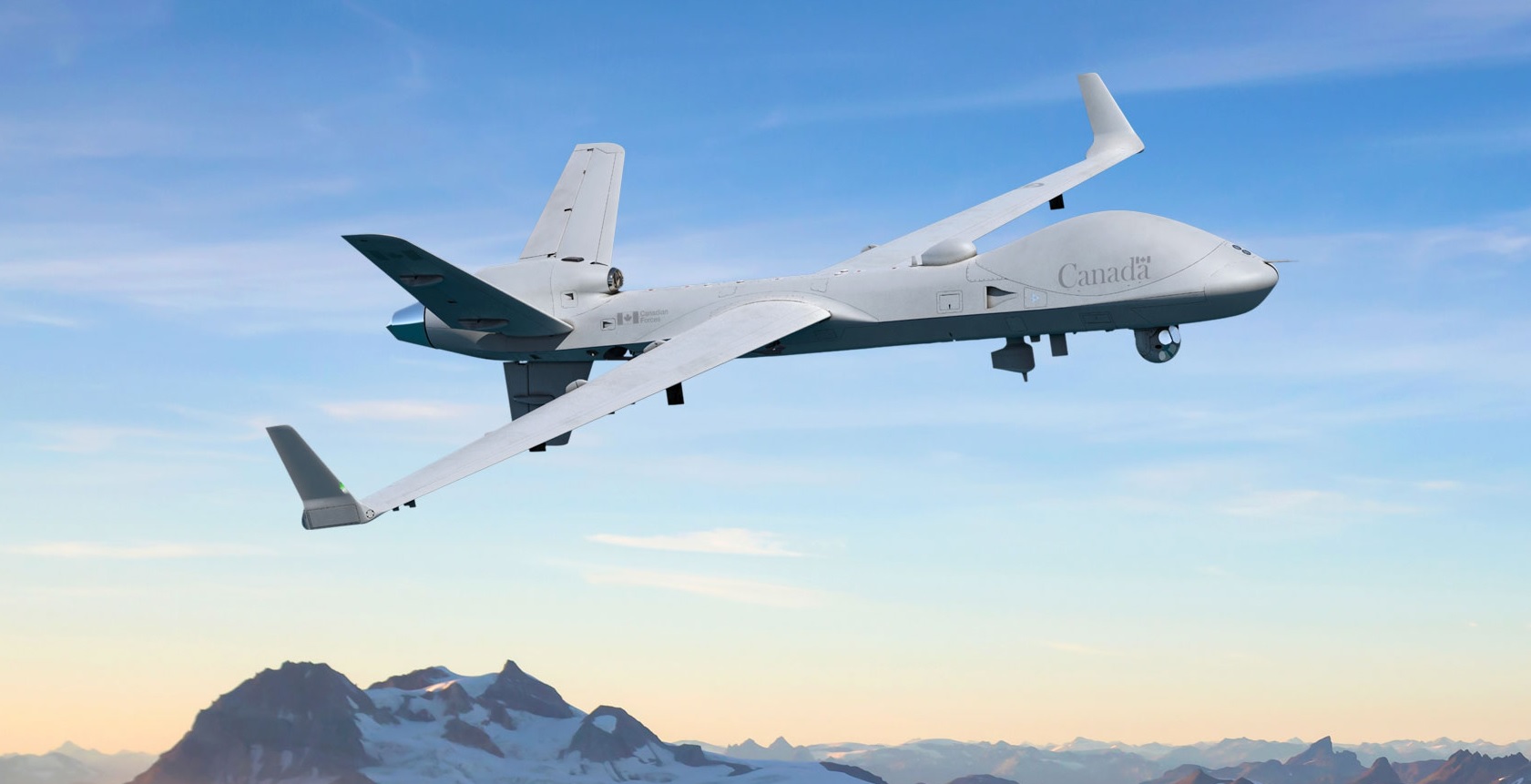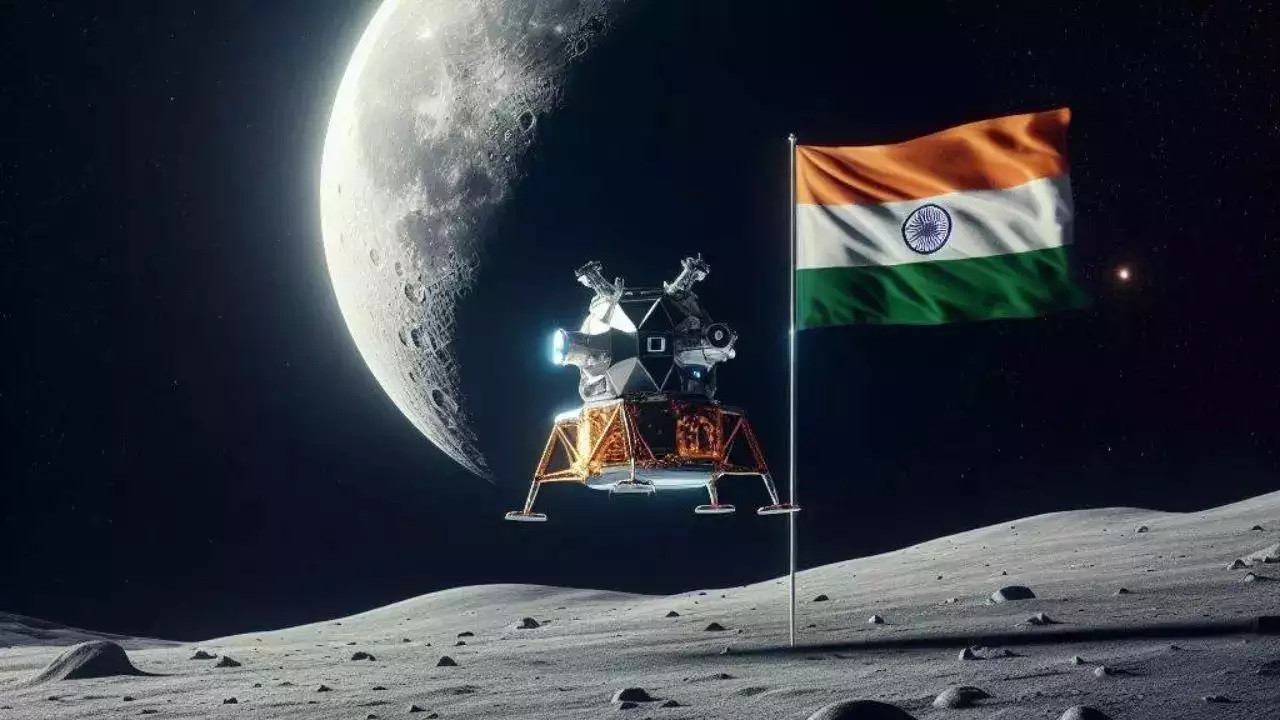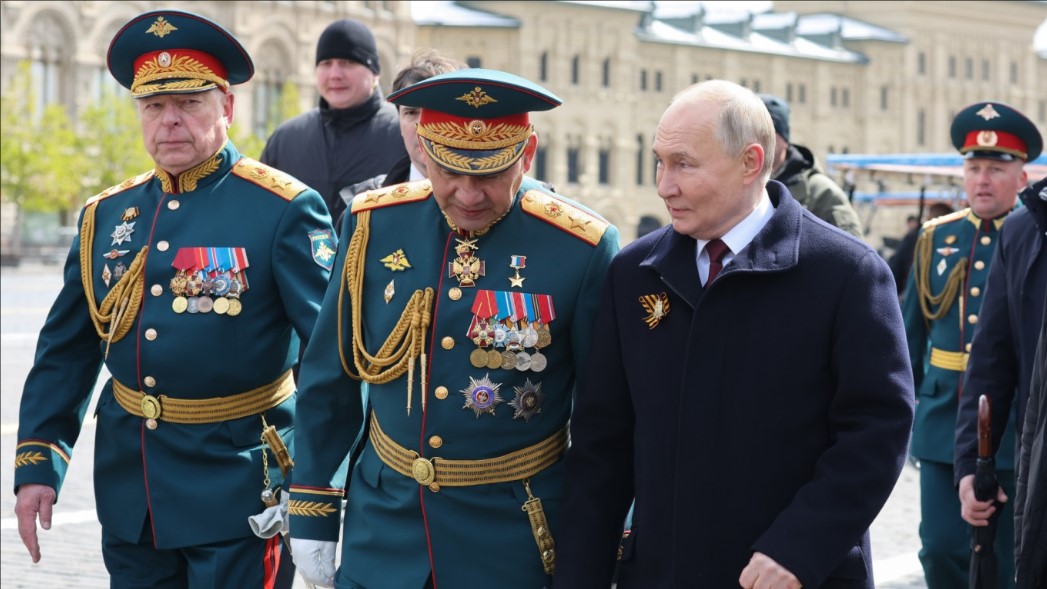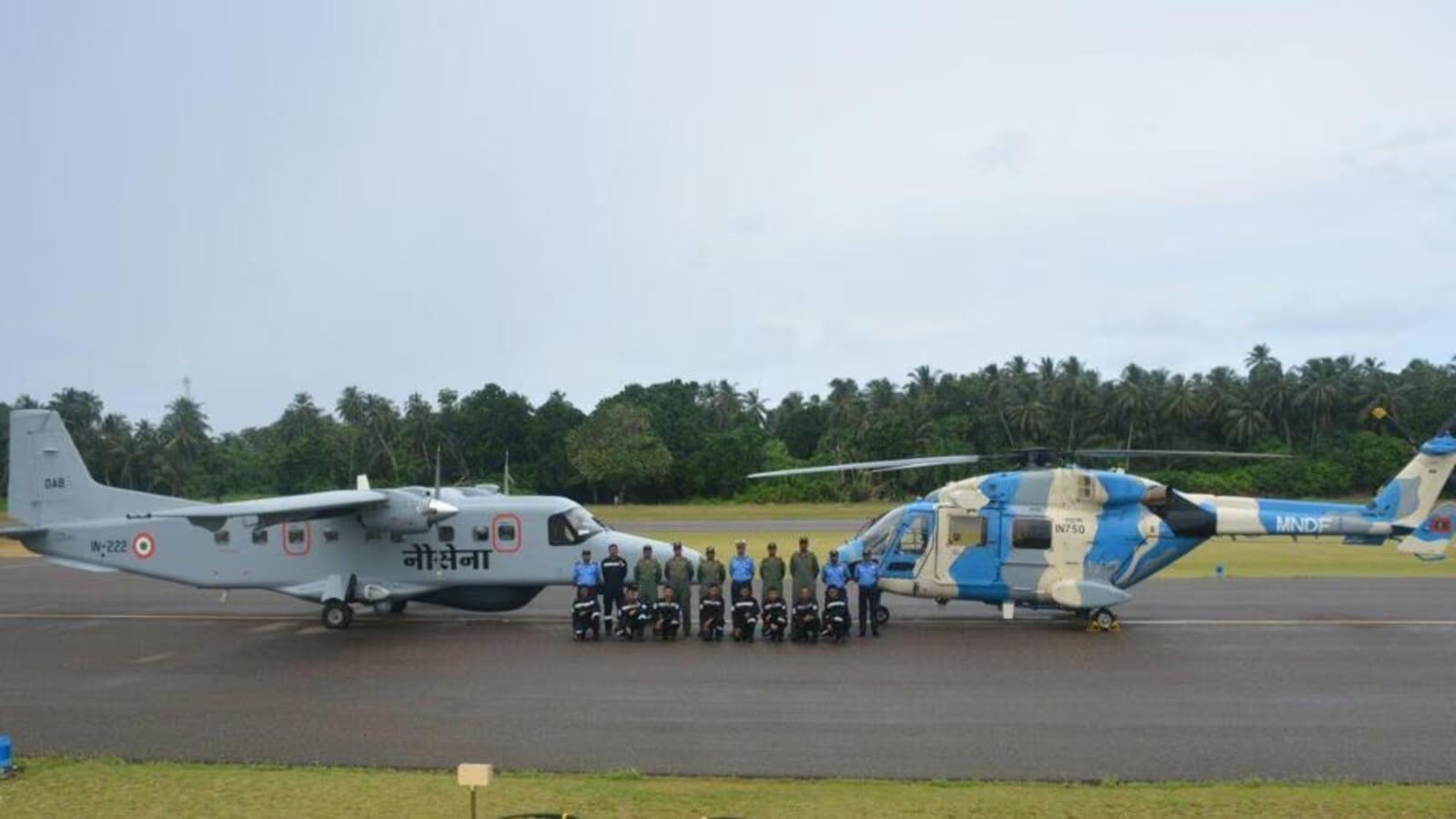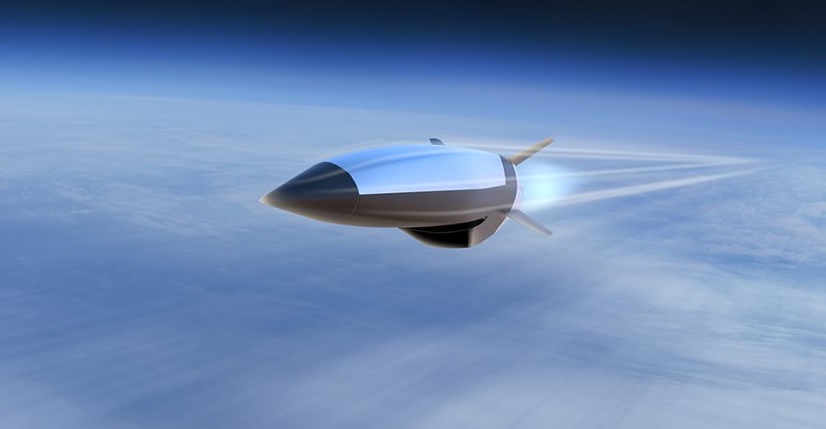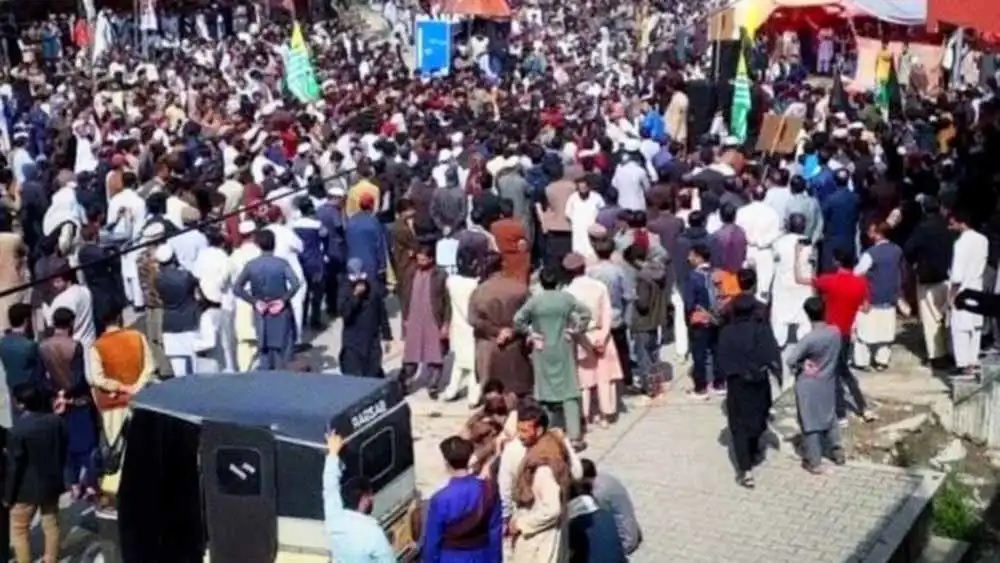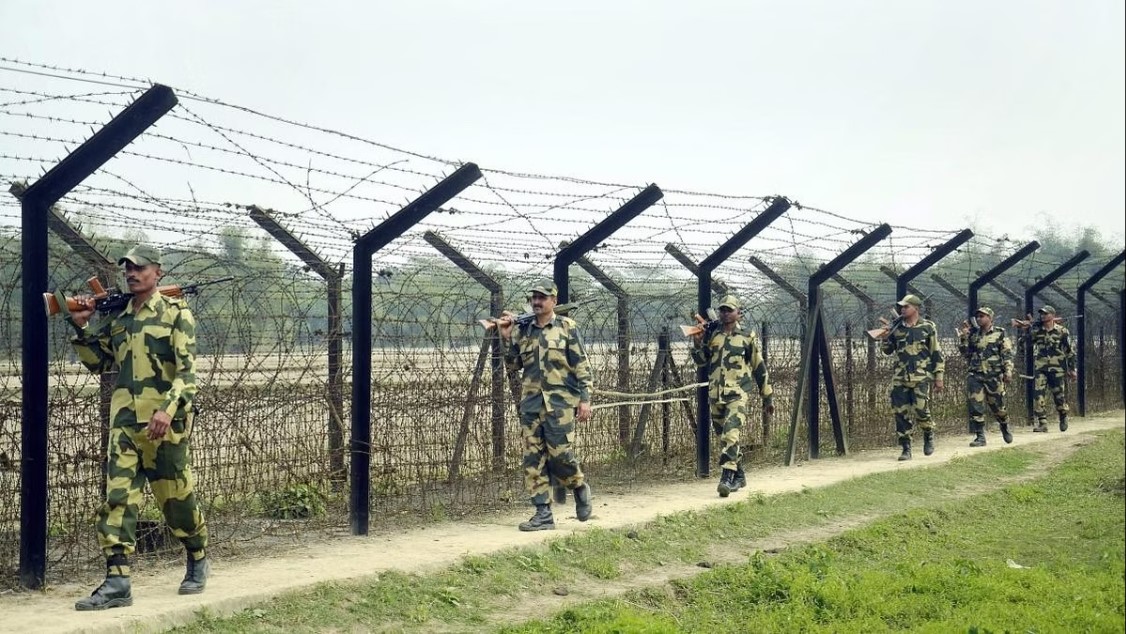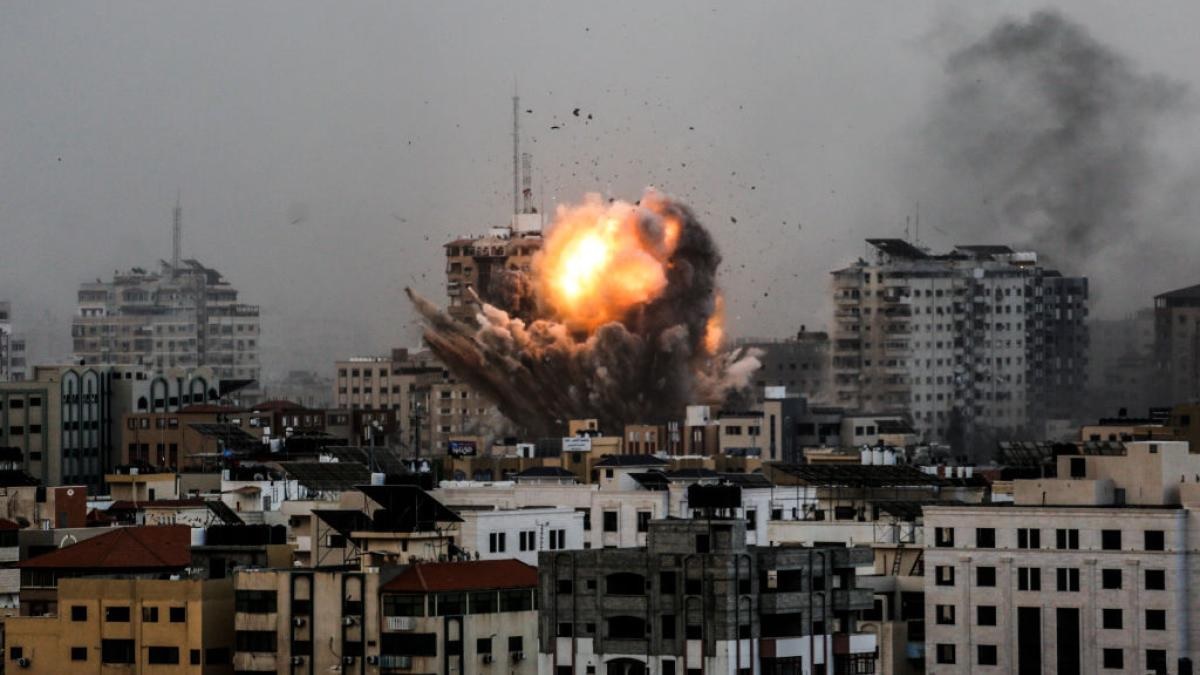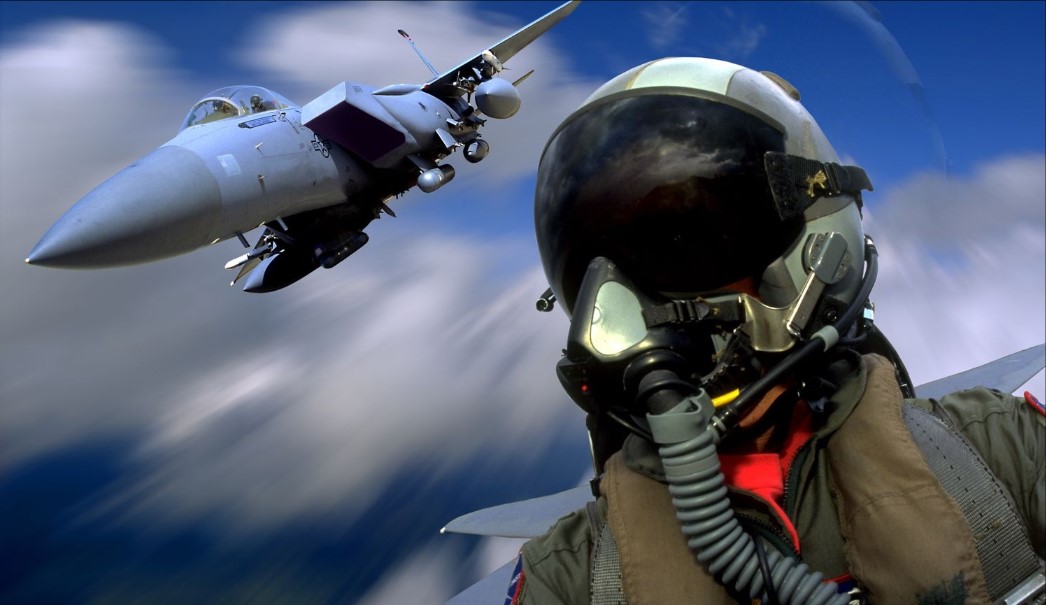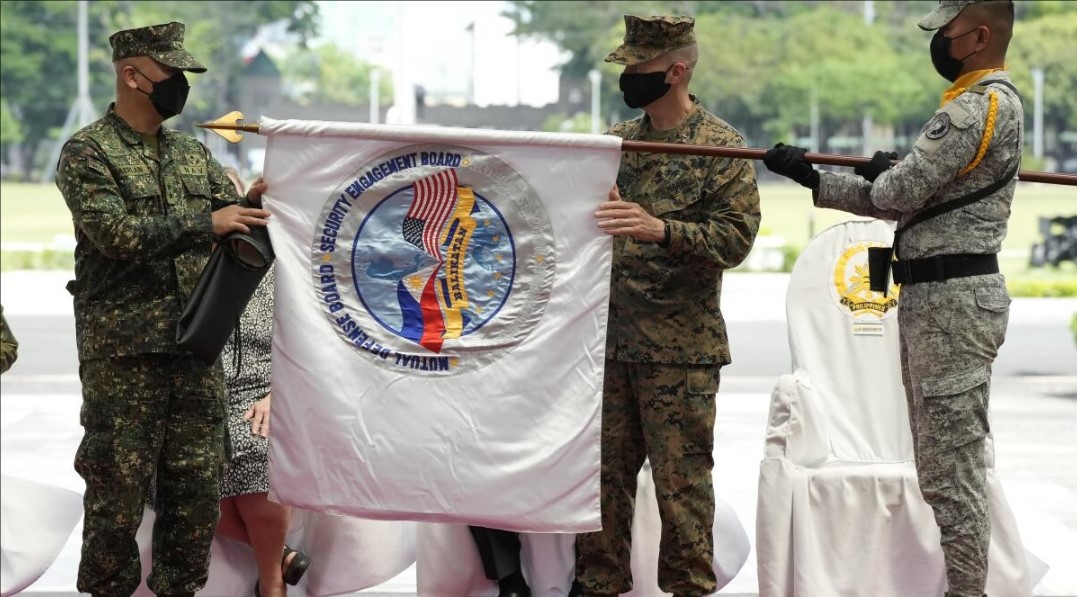India
India ,France 'Shakti-2024' marks the seventh edition of joint military exercises between India and France, focusing on ground control operations in challenging terrains with the participation of Air Force assets for the first time, reflecting the deepening Indo-French defense ties and commitment to regional security.The seventh edition of the joint military exercise between the Indian and French Armies, known as ‘Shakti-2024’, commenced on Monday at the Eastern Command’s Joint Training Node in Umroi, Meghalaya. This exercise, held alternatively in India and France, will run until May 26, with a focus on training for ground control operations in semi-urban and mountainous terrain under United Nations mandate. Notably, this year’s exercise includes Air Force assets for the first time, alongside Navy and Air Force observers, marking a significant advancement in its complexity compared to previous editions.One key highlight of ‘Shakti-2024’ is the participation of a larger contingent, with twice the number of troops compared to previous exercises. The exercise commenced with a brigade-level command post-exercise, showcasing the depth and intensity of the training involved.The French contingent, consisting of 90 personnel from the elite corps of the French Army known as Legion etrangere (Foreign Legion), brings a wealth of experience and expertise to the exercise. Their involvement underscores the growing collaboration between India and France in the defense sector.This year’s ‘Shakti’ exercise is part of the broader efforts to strengthen Indo-French defense ties, following French President Emmanuel Macron’s State Visit to India earlier in the year. Recent high-level visits, including the official visit of CDS General Anil Chauhan to France and the visits of the French Navy and Army Chiefs to India, have further cemented this cooperation.The exercise also reflects the deepening engagement between the two nations in various domains, including naval exercises and joint military drills. A recent port call by a French frigate, FNS Bretagne, in Kerala, and upcoming naval exercises like ‘Varuna’, demonstrate the growing synergy between the Indian and French armed forces.Defense and security cooperation between India and France have been identified as a cornerstone of their strategic partnership. This was reaffirmed during Prime Minister Narendra Modi’s visit to France in 2023, with the adoption of the Horizon 2047 Roadmap. The aim is to enhance both nations’ sovereignty and strategic autonomy while fostering peace and security in the Indo-Pacific region.Speaking at the opening ceremony of the exercise, Thierry Mathou, Ambassador of France to India, emphasized the unique bond between the two nations, highlighting the reciprocal invitations extended to leaders on their respective National Days. He underscored the aim of the Indo-French defense cooperation to strengthen sovereignty, strategic autonomy, and contribute to peace and security in the Indo-Pacific region.In conclusion, the ‘Shakti-2024’ exercise symbolizes the deepening Indo-French defense cooperation and underscores the commitment of both nations to enhance mutual capabilities and contribute to regional stability.
Read More → Posted on 2024-05-13 16:27:10India
India ,Nepal Nepal's economic advisor resigns amid controversy over new currency featuring disputed Indian territories, highlighting tensions between the two nations over territorial claims.In a recent development, Nepal's economic advisor, Chiranjivi Nepal, has resigned from his position following a controversy sparked by his remarks regarding the government's decision to issue new hundred-rupee notes featuring a map that includes three Indian territories. The move has already been met with rejection from India.President Ram Chandra Paudel approved Chiranjivi Nepal's resignation, as stated in a press release from the Office of the President. Chiranjivi Nepal expressed his sentiments, explaining, "I made the remarks as an economist and a former governor of the central bank, but some news media have twisted it in an attempt to unnecessarily drag the respectful institution of the president into controversy, which made me feel sad."The new map depicted on the currency includes territories such as Kalapani, Lipulekh, and Limpiyadhura. However, India maintains sovereignty over these areas.Chiranjivi Nepal clarified his stance, saying, "My intention in the statement was just to make people aware as a conscious citizen that such acts could create practical problems for the country and the people at a time when discussions are underway at diplomatic levels."The decision to print the new hundred-rupee notes with the revised map was made during a Cabinet meeting, despite criticism from various quarters. CPN-UML chairman and former Prime Minister KP Sharma Oli, along with a group of civil society leaders, expressed disapproval of Chiranjivi Nepal's remarks, arguing that they were against national interest and breached decorum.Nepal's government had previously unveiled a new political map in May 2020, including Lipulek, Kalapani, and Limpiyadhura within its territory. This decision was backed by the Parliament but faced objection from India.India's External Affairs Ministry stated, "This artificial enlargement of claims is not based on historical fact or evidence and is not tenable. It is also violative of our current understanding to hold talks on outstanding boundary issues."External Affairs Minister S Jaishankar voiced dissatisfaction with Nepal's decision to issue the new notes, emphasizing that it would not alter the ground situation.Nepal shares a border of over 1,850 km with five Indian states – Sikkim, West Bengal, Bihar, Uttar Pradesh, and Uttarakhand.The resignation of Chiranjivi Nepal underscores the complexities surrounding diplomatic relations and territorial disputes between Nepal and India. The incident highlights the importance of thoughtful dialogue and diplomacy in addressing sensitive issues while upholding national interests and international norms.
Read More → Posted on 2024-05-13 16:14:49India
India India's CSIR-NAL celebrates Technology Day by achieving a record-breaking altitude of 25,000 feet with its solar-powered High Altitude Pseudo Satellite, marking a significant milestone in aerial technology advancements.India celebrated its Technology Day with a remarkable feat in aerial technology as the Council of Scientific and Industrial Research-National Aerospace Laboratories (CSIR-NAL) achieved a record-breaking altitude of 25,000 feet above sea level with its High Altitude Pseudo Satellite (HAP) vehicle.What are HAPs?HAPs, or High Altitude Pseudo Satellites, are not your typical drones. These aircraft are designed to fly in the stratosphere, a layer of the atmosphere above where commercial airplanes fly. They are powered by solar cells and advanced batteries, allowing them to stay in the air for long periods, making them a cost-effective alternative to traditional satellites.CSIR-NAL's Success:The successful test flight of CSIR-NAL's HAP showcases India's growing expertise in developing advanced aerial technology. Reaching such high altitudes opens up possibilities for various applications like telecommunications, surveillance, and environmental monitoring.Future Plans:Having achieved this milestone, CSIR-NAL aims to enhance the capabilities of their HAP further. They plan to improve flight durations, increase payload capacity, and integrate advanced sensors and communication systems. The goal is to develop a fully operational system that can contribute to scientific and commercial endeavors.India's Ambitions:This achievement not only demonstrates CSIR-NAL's technological prowess but also reflects India's ambitions in aerospace innovation. As India continues to invest in research and development, more groundbreaking advancements can be expected in the future.A Glimpse into the Future:CSIR-NAL's successful high-altitude flight with the HAP signifies India's commitment to pushing the boundaries of technological innovation. As HAPs become more sophisticated and accessible, they have the potential to revolutionize various industries and benefit society as a whole.
Read More → Posted on 2024-05-13 16:08:17World
U.SGA-ASI upgrades MQ-9A Reaper drones with Shift5's cyber solutions for enhanced cybersecurity, alongside an Airborne Battlespace Awareness and Defense pod to detect RF and IR threats, addressing recent operational setbacks.General Atomics Aeronautical Systems, Inc. (GA-ASI) has announced significant upgrades to its MQ-9A Reaper drones, aimed at bolstering cybersecurity and defense capabilities. These enhancements come in response to recent setbacks experienced by the Reaper drones in combat situations.To address cybersecurity concerns, GA-ASI has collaborated with US cybersecurity startup Shift5 to integrate onboard cyber anomaly detection and predictive maintenance solutions into the Reaper drones. This integration aims to thwart malicious code that could potentially disable the drones or compromise valuable intelligence data. By leveraging Shift5's platform, operators can swiftly detect and respond to cyber threats, ensuring mission readiness and cyber survivability.In addition to cybersecurity measures, the MQ-9A Reaper drones will be equipped with an Airborne Battlespace Awareness and Defense (ABAD) pod. This pod is designed to detect radio frequency (RF) and infrared (IR) threats commonly used by anti-aircraft weapons. By providing early detection of ground threats, the ABAD pod empowers the Reaper drones to effectively counter potential attacks.David R. Alexander, President of GA-ASI, emphasized the significance of these upgrades in enhancing the operational capabilities of the MQ-9A Reaper drones. He highlighted the critical importance of threat awareness and survivability, particularly in contested environments where the drones operate.However, these upgrades come in the wake of recent setbacks faced by the MQ-9A Reaper drones. Incidents such as the shooting down of a Reaper by Iran-backed Houthi rebels in Yemen, as well as encounters with Russian aircraft over the Black Sea, underscore the need for enhanced cybersecurity and defense measures.Despite these challenges, GA-ASI remains committed to advancing the capabilities of the MQ-9A Reaper drones. The development of the ABAD pod is underway, with plans for it to become operational by 2025. These upgrades signify a proactive approach towards addressing evolving threats and ensuring the effectiveness of unmanned aircraft systems in modern warfare scenarios.In conclusion, the upgrades introduced by GA-ASI represent a significant step forward in enhancing the cybersecurity and defense capabilities of the MQ-9A Reaper drones. By leveraging innovative technologies and strategic partnerships, these upgrades aim to strengthen the resilience and effectiveness of the drones in fulfilling their operational objectives.
Read More → Posted on 2024-05-13 15:28:41India
India ,Iran India to sign a historic agreement with Iran, taking operational control of Chabahar Port for 10 years, marking a pivotal moment in regional connectivity and trade dynamics.In a significant move amidst escalating geopolitical tensions, India is poised to sign an agreement with Iran to take over the management of the Chabahar Port for the next decade. The Economic Times reports that Shipping Minister Sarbananda Sonowal is slated to travel to Iran for the signing ceremony on Monday.This development marks a historic milestone as it will be the first time India assumes operational control of a port beyond its borders. Chabahar Port holds strategic importance for India, serving as a crucial gateway to Afghanistan, Central Asia, and the wider Eurasian region. It is seen as a key counterbalance to Pakistan's Gwadar port and China's expansive Belt and Road Initiative.The agreement comes at a crucial juncture, as India aims to bolster its connectivity with Afghanistan and Central Asia while reducing dependence on Pakistan. Plans are underway to integrate Chabahar Port with the International North South Transport Corridor (INSTC), offering India alternative trade routes amidst disruptions in the region.The Ministry of External Affairs approved a proposal by India Ports Global in April to take charge of operations at Myanmar's Sittwe Port, further solidifying India's maritime presence in the Bay of Bengal.The timing of Sonowal's visit to Iran, amid ongoing election campaigns, underscores the significance of the impending pact. The agreement, which has been in negotiation for years, is set to empower India with operational control of Chabahar Port, which it has supported financially for expansion.Chabahar Port has been a focal point of discussions between Indian and Iranian leadership, with Prime Minister Narendra Modi and President Ebrahim Raisi highlighting its importance during various diplomatic engagements. The new agreement is poised to replace the original contract signed in 2016 during Modi's visit to Iran, with a validity period of 10 years, extendable automatically.As global trade routes face disruptions due to the West Asia crisis, India's move to assume control of Chabahar Port signifies its commitment to strengthening regional connectivity and securing vital trade corridors.In conclusion, India's upcoming agreement with Iran to manage Chabahar Port marks a significant step towards enhancing its strategic presence in the region and ensuring uninterrupted access to key markets.
Read More → Posted on 2024-05-13 15:22:39Space & Technology
India Chandrayaan-4: India's upcoming lunar mission aims to retrieve and return samples from the Moon, showcasing the nation's growing prowess in space exploration.India is gearing up for an extraordinary lunar mission with Chandrayaan-4, marking a significant milestone in the nation's space exploration journey. This ambitious endeavor aims to accomplish what no Indian mission has done before: return samples from the Moon. Let's delve into the details of this intricate mission and what it means for India and the world.The mission unfolds in carefully orchestrated stages, beginning with a dual-launch approach. The Polar Satellite Launch Vehicle (PSLV) launches the Reentry Module (RM) and Transfer Module (TM) into a sub-Geosynchronous Transfer Orbit (sub-GTO). Simultaneously, the Launch Vehicle Mark-3 (LMV-3) propels the Lander Module (LM), Ascender Module (AM), and Propulsion Module (PM) towards a Lunar Transfer Orbit (TLI) or GTO.Upon reaching lunar orbit, the RM and TM secure their positions while awaiting the arrival of the AM. The LM and AM gracefully separate from the LMV-3 and descend to the designated landing site near the lunar south pole, known as the Shiv Shakti point. Using a robotic arm, the LM collects lunar samples, a crucial aspect of the mission.Once the samples are safely gathered, the AM separates from the LM and lifts off from the lunar surface. It then docks with the TM in lunar orbit, where another robotic arm transfers the samples to the RM for the journey back to Earth.As the mission nears its conclusion, the AM undocks from the TM, and the RM and TM depart lunar orbit. Upon re-entering Earth's atmosphere, the RM delivers the lunar samples to a predetermined location for further analysis.Chandrayaan-4 represents more than just a scientific expedition; it signifies India's advancement in space exploration. The retrieved lunar samples hold immense scientific value, offering insights into the Moon's formation, composition, and potential resources. This mission underscores India's growing expertise in space technology and its commitment to furthering humanity's understanding of our celestial neighbors.In conclusion, Chandrayaan-4 heralds a new chapter in India's space odyssey, promising groundbreaking discoveries and pushing the boundaries of lunar exploration.
Read More → Posted on 2024-05-13 15:18:28World
Pakistan ,IraqPakistan and Iraq reportedly seal a $1.8 billion defence deal, with Pakistan set to supply twelve JF-17 Thunder Block III fighter jets and twelve MFI-17 Mushaq trainer aircraft to the Iraqi Air Force, pending official confirmation.Pakistan and Iraq have purportedly inked a substantial defence agreement, as reported by Pakistani media outlet "The Nation." According to these reports, the deal amounts to $1.8 billion and involves Pakistan providing twelve JF-17 Thunder Block III fighter jets and twelve MFI-17 Mushaq trainer aircraft to the Iraqi Air Force.Although the specifics of the agreement are yet to be officially confirmed, sources within the Pakistan Air Force (PAF) have hinted at its finalization during high-level discussions between Pakistani and Iraqi defense officials.If the deal is indeed confirmed, it would mark a significant milestone for Pakistan's defence industry and further strengthen its ties with Iraq.Here's what we know so far:- The agreement reportedly includes twelve JF-17 Thunder Block III fighter jets, which are 4.5-generation multi-role fighter aircraft jointly developed by Pakistan and China.- Additionally, twelve MFI-17 Mushaq trainer aircraft are said to be part of the deal. These trainer aircraft are commonly used by the PAF and various other air forces worldwide.Iraq would become the fourth country to acquire JF-17 Thunder aircraft, following previous sales to Nigeria and Myanmar. Furthermore, Azerbaijan is also reported to have finalized an agreement with the PAF for the purchase of these aircraft.It's essential to emphasize that these reports are still unconfirmed. While the sources cited by Pakistani media are deemed credible, official confirmation from both the Pakistani and Iraqi governments is awaited.This potential agreement underscores the growing cooperation between Pakistan and Iraq in the realm of defence and highlights Pakistan's burgeoning role as a supplier of advanced military equipment to other nations. However, until official confirmation is provided, the details and implications of the deal remain subject to change.
Read More → Posted on 2024-05-13 15:13:33World
Russia Russian President Putin replaces Defense Minister Shoigu with economist Belousov amidst ongoing Ukraine conflict, signaling a shift towards innovation in military strategy. The shake-up comes at a crucial juncture as Russian troops advance in eastern Ukraine and launch a major ground operation in the Kharkiv region.In a significant move, Russian President Vladimir Putin has announced the replacement of Defense Minister Sergei Shoigu amidst the ongoing conflict with Ukraine. The decision comes after more than two years of military engagement in Ukraine, with Russian troops currently advancing in eastern regions and launching a major ground operation in the northeastern Kharkiv area.Andrey Belousov, an economist, has been proposed as Shoigu's replacement. This choice underscores Putin's aim to infuse the defense ministry with innovative thinking, as stated by Kremlin spokesman Dmitry Peskov. Belousov, although lacking a military background, has been a prominent economic adviser to Putin for the past decade.The timing of this change is crucial, given the evolving nature of the conflict. Despite initial setbacks, including the failure to capture Kyiv and retreats from certain regions, Putin had previously stood by Shoigu. However, the need for innovation and adaptability in military strategy appears to have prompted this decision.Shoigu, who has served as defense minister since 2012, held a longstanding position of trust within Putin's inner circle. His reassignment to the role of secretary of the Security Council reflects a reshaping of leadership dynamics within the Russian government.Valery Gerasimov, Chief of the General Staff, will retain his position overseeing daily military operations in Ukraine. Both Shoigu and Gerasimov had faced criticism from influential pro-offensive military circles for perceived failures in the conflict. Notably, Yevgeny Prigozhin, a paramilitary chief who called for Shoigu's removal, met an untimely demise in a plane crash following his dissent.The shake-up in Russia's military leadership coincides with Putin's constitutional obligation to appoint new government ministers following his recent election victory. These changes come at a pivotal moment in the conflict, with tensions between Russia and the West escalating.The conflict in Ukraine is framed by Putin as part of a broader "hybrid war" between Russia and the West. The outcome of these leadership changes could significantly impact the trajectory of the conflict and relations between Russia and its international counterparts.As Russia navigates this critical juncture, the implications of Putin's decision to replace Shoigu reverberate both domestically and internationally. The road ahead remains uncertain, with the conflict in Ukraine continuing to shape geopolitical dynamics on a global scale.
Read More → Posted on 2024-05-13 15:07:07India
India ,Maldives Maldives Defense Minister acknowledges lack of pilots for Indian-donated aircraft, amid strained relations; plans underway for training local pilots to fill the gap.In a recent revelation, Maldives Defence Minister Ghassan Maumoon acknowledged the absence of qualified pilots within the Maldives National Defense Force (MNDF) capable of operating three aircraft donated by India. This admission comes amidst the withdrawal of 76 Indian defence personnel from the Maldives, following President Mohamed Muizzu's directive.Speaking at a press conference held at the President’s Office, Ghassan disclosed that despite previous training efforts initiated by past administrations, no Maldivian soldiers have attained the necessary licensing or proficiency to fly the two helicopters and Dornier aircraft provided by the Indian military. These training programs were aimed at building local capacity but faced challenges leading to incomplete training for Maldivian soldiers.The strained relations between the Maldives and India escalated when President Muizzu, known for his pro-China stance, demanded the withdrawal of all Indian military personnel operating the aviation platforms by May 10. India has complied with this request by withdrawing its military personnel, leaving a void in operational expertise for the donated aircraft.Contrary to current statements, during their time in opposition, senior officials of the present administration criticized the previous government's handling of military aviation capabilities. They claimed that capable pilots existed within the MNDF, which now appears to be not the case.The training of Maldivian pilots was the primary objective behind the deployment of Indian soldiers to operate the helicopters and Dornier aircraft, which were donated during different administrations. However, despite ongoing efforts, the completion of training remains elusive.Foreign Minister Zameer has indicated that the agreement to replace Indian soldiers with civilians also includes provisions for training local pilots. This signals a commitment from both sides to address the deficiency in pilot expertise and ensure the sustainable operation of the donated aircraft in the future.In light of these developments, the Maldives government underscores its commitment to strengthening its military capabilities while maintaining cooperative relations with strategic partners. Efforts to train local pilots will be crucial in ensuring the effective utilization of the donated aircraft for national security and emergency response purposes.As the Maldives navigates its military aviation challenges, collaboration with international partners, including India, will continue to play a pivotal role in enhancing its defence capabilities and safeguarding its territorial integrity.
Read More → Posted on 2024-05-13 15:02:59World
U.K The UK is investing £1 billion to develop its first hypersonic missile, aiming to enhance defence capabilities and maintain competitiveness in aerospace technology. The initiative involves a consortium of 90 entities, including SMEs and academic institutions, to foster rapid advancements in missile technology.The United Kingdom is gearing up for a major advancement in its defence capabilities with a substantial investment of £1 billion towards the development of its first hypersonic missile. Spearheaded by Defence Equipment & Support (DE&S), the Hypersonic Technologies & Capability Development Framework (HTCDF) is set to involve a consortium of 90 entities, including small and medium enterprises (SMEs) and academic institutions. This strategic move aims to strengthen the UK’s defence infrastructure by fostering rapid progress in missile technology.Hypersonic missiles are game-changers in the world of defence due to their incredible speed, capable of traveling at over five times the speed of sound (Mach 5). This attribute makes them particularly valuable for their ability to outpace and bypass current air defence systems, providing a level of unpredictability crucial for strategic military operations. The initiative by DE&S reflects not only a dedication to national security but also a commitment to maintaining the UK’s competitiveness in aerospace technology.The HTCDF framework is meticulously designed to streamline the UK’s procurement and development processes, enabling swift responses to the ever-evolving global security landscape. By adopting a competitive bidding process for contracts, the aim is to ensure that the most effective and innovative technologies are pursued. Moreover, with the participation of a diverse range of stakeholders from various sectors, including academia and SMEs, the initiative seeks to harness a wide array of technological insights to accelerate the pace of hypersonic capabilities development.This investment represents a significant component of the UK government’s recent pledges to bolster defence spending, signaling a strategic shift towards next-generation military technology. The development of hypersonic capabilities is poised to elevate the UK’s defence posture on the international stage, providing enhanced levels of deterrence and operational flexibility.In conclusion, the UK’s £1 billion investment in hypersonic missile development signifies a bold step towards fortifying its defence capabilities. Through collaboration, innovation, and strategic foresight, the nation is poised to take a leading role in the realm of hypersonic technology, ensuring its readiness to meet the challenges of an ever-changing security landscape.
Read More → Posted on 2024-05-13 14:57:33World
POK Violent clashes erupt in Pakistan-occupied Kashmir over soaring wheat flour and electricity prices, leaving one police officer dead and over 100 injured, predominantly policemen. Protests organized by the Jammu Kashmir Joint Awami Action Committee escalate into clashes with security forces, prompting calls for peaceful resolution from Pakistan's Prime Minister Shehbaz Sharif.A recent eruption of violence in Pakistan-occupied Kashmir (PoK) has left one police officer dead and over 100 individuals injured, predominantly policemen. Reports indicate that clashes ensued between security forces and demonstrators protesting against soaring prices of wheat flour and electricity in the region.The tumultuous events unfolded amidst a wheel-jam and shutter-down strike organized by activists of a rights movement in PoK. The clashes escalated on Saturday as police confronted protestors affiliated with the Jammu Kashmir Joint Awami Action Committee (JAAC), who were rallying for their demands across several districts.Tragically, Sub-Inspector Adnan Qureshi lost his life due to a gunshot wound sustained during the unrest in Islamgarh. His demise underscores the gravity of the situation and the risks faced by law enforcement officials in maintaining order.In response to the escalating tensions, Pakistan Prime Minister Shehbaz Sharif has urged all parties to pursue peaceful avenues for resolution. He emphasized the importance of upholding the rule of law and condemned any acts of violence or vandalism.The underlying grievances fueling the protests revolve around demands for subsidized wheat flour, equitable access to electricity, and an end to perceived privileges enjoyed by the elite class. However, the protests have turned violent, leading to significant casualties and widespread disruption.Efforts to quell the unrest have been met with challenges, as authorities have resorted to arrests and heightened security measures. Yet, clashes persist, resulting in injuries to both law enforcement officers and civilians.Amidst the chaos, government officials have extended an olive branch, expressing a willingness to engage in dialogue to address the grievances raised by the protestors. However, tensions remain high, with mistrust between the parties exacerbating the situation.It is crucial for all stakeholders to prioritize dialogue and peaceful engagement to prevent further escalation of violence. Resolving the underlying issues requires a concerted effort from both the government and the protestors to find common ground and work towards sustainable solutions.In conclusion, the recent clashes in PoK underscore the urgent need for constructive dialogue and peaceful resolution of grievances. The loss of life and injuries suffered by both law enforcement personnel and civilians serve as a stark reminder of the consequences of unchecked unrest. Moving forward, it is imperative for all parties to prioritize stability, respect the rule of law, and engage in meaningful dialogue to address the root causes of the protests.
Read More → Posted on 2024-05-13 14:53:28India
India Central paramilitary forces adopt beekeeping model pioneered by BSF in West Bengal to boost employment and security along India's international borders.In a bid to enhance employment opportunities in border areas while strengthening security measures, the Union home ministry has directed various central paramilitary and allied forces to replicate a successful beekeeping model pioneered by a BSF unit in West Bengal. This initiative aims to foster goodwill among local communities and deter criminal activities along India's international borders.The model, developed and implemented by the 32nd battalion of the Border Security Force (BSF) stationed in Nadia district, West Bengal, garnered praise during a recent meeting chaired by Union Home Secretary Ajay Bhalla. Following the meeting, all central armed police forces (CAPFs) have been tasked with adopting this beekeeping approach in their respective regions of responsibility.While some border guarding forces like the Sashastra Seema Bal (SSB) and the Indo Tibetan Border Police (ITBP) do not have physical fences, they can still implement similar initiatives tailored to their specific duties. The overarching goal is to leverage local resources and community engagement to bolster security efforts.The primary objective of replicating the BSF West Bengal beekeeping model is twofold: to generate employment opportunities in remote border regions and cultivate positive relationships with local residents, who serve as crucial allies in maintaining security. By involving locals in productive activities, such as beekeeping and horticulture, the initiative aims to mitigate the allure of criminal involvement driven by limited livelihood options.Initiated in November last year, the BSF unit in Nadia has installed nearly 200 beehives along the India-Bangladesh border fence. This strategic placement not only serves as a deterrent to border crimes like smuggling but also provides a source of income for participating communities. Additionally, efforts are underway to plant flowering and fruit-bearing plants to sustain honeybee populations and support trade activities.Commandant Sujeet Kumar, the commanding officer of the BSF battalion, emphasized the direct correlation between economic opportunities and border security. Recognizing the need to address root causes of trans-border crimes, the 'beehives on fence' initiative aims to empower local populations through sustainable livelihoods.Collaborating with the Ayush ministry, the BSF has procured herbal and aromatic plants to complement the beekeeping initiative. This integration aligns with the government's broader agenda, including the vibrant village programme (VVP), which seeks to engage border communities in productive ventures to curb migration and enhance internal security.Since the inception of the 'beehives on border fence' model, over 100,000 saplings have been planted in Nadia's border area through joint efforts involving BSF personnel, the Ayush ministry, and local volunteers. This collective endeavor underscores the commitment of security forces to not only safeguard the nation's borders but also uplift the socio-economic well-being of border communities.In conclusion, the adoption of the BSF West Bengal beekeeping model by various central paramilitary and allied forces signifies a proactive approach towards addressing security challenges while promoting sustainable development in border regions. By harnessing the potential of beekeeping and horticulture, these initiatives aim to create a win-win situation for both security agencies and local communities, fostering a safer and more prosperous border environment.
Read More → Posted on 2024-05-12 16:19:23India
India , Russia Russian exporters leverage idle funds in Indian rupees to purchase $4 billion worth of Indian defence equipment and other imports, facilitated by Vostro accounts, amid efforts to enhance bilateral trade ties with India.In recent developments, Russian exporters engaging in trade with India have made significant transactions amounting to nearly $4 billion. These transactions encompassed the procurement of Indian-made defence equipment, armaments, and other imports, alongside investments in Indian securities. These expenditures were made possible through funds that had been dormant in their Vostro accounts.Vostro accounts serve as a pivotal mechanism to facilitate trade between Russia and India, leveraging the Indian rupee for transactions. Managed by domestic banks on behalf of foreign counterparts, these accounts enable various trade-related activities, including forex settlements, cross-border payments, and investments in different markets.Until October, Russian exporters had approximately $8 billion resting in Vostro accounts, intended to bolster trade ties between the two nations. However, due to limited investment opportunities within India, a substantial portion of these funds remained unutilized.Reports indicate that in the span of just six months, around 50% of the funds held in Vostro accounts were deployed for various trade-related purposes. While the exact figures remain elusive due to the complexity of transactions, insiders familiar with the matter confirm a significant utilization of funds during this period.The Reserve Bank of India (RBI) had earlier sanctioned the opening of Special Rupee Vostro Accounts (SRVAs) for 20 banks operating in India, thereby facilitating bilateral trade in local currencies with partner banks from 22 countries, including Russia. This initiative aimed to streamline trade transactions and enhance economic cooperation between India and its international counterparts.The surge in rupee deposits in Russian Vostro accounts correlates with India's heightened imports of affordable Russian crude oil amidst Western sanctions on Moscow. Russia's substantial contributions to India's crude oil supply further solidify their economic ties.Moreover, Russian funds in Indian rupees have found their way into investments in Indian government treasury bills. However, regulatory restrictions prohibit such funds from being invested in corporate debt instruments.Efforts are underway by both Indian and Russian authorities to address the issue of accumulating rupee payments in Vostro accounts. These funds are also being utilized to settle Indian exports, further facilitating the bilateral trade relationship.In 2023, India's exports to Russia amounted to $4.06 billion, while imports totaled $60.60 billion, underscoring the significance of their economic partnership.In essence, the recent utilization of idle funds in Vostro accounts highlights the dynamic nature of Indo-Russian trade relations and the mutual benefits derived from strategic economic cooperation. As both nations continue to explore avenues for enhancing bilateral trade, the efficient utilization of available resources remains paramount for sustaining this symbiotic partnership.
Read More → Posted on 2024-05-12 16:10:31Space & Technology
World The sun unleashed its strongest solar flare of the weekend, an X5.8 class eruption, causing radio blackouts and heralding spectacular northern lights displays. Scientists anticipate continued solar activity from the massive sunspot region, AR3664, with potential impacts on Earth's systems in the coming days.Over the weekend (Friday and Saturday) , the sun showcased its might with a series of intense solar flares, leaving scientists and observers amazed. These eruptions, originating from an active sunspot region known as AR3664, reached unprecedented levels, with the most powerful flare registering as an X5.8 class event according to NOAA's Space Weather Prediction Center (SWPC). The impact of these flares was immediately felt on Earth's sunlit side, causing temporary or complete loss of high-frequency radio signals. The intensity continued as another significant flare, an X1.5 class event, occurred shortly after, further highlighting the sun's dynamic behavior.Solar flares, characterized by their powerful bursts of energy, have the potential to disrupt various systems on Earth, including radio communications, electric power grids, navigation signals, and even spacecraft and astronauts in orbit. Despite their rarity, the recent series of high-magnitude flares serves as a reminder of the sun's capacity to influence our technological infrastructure.The active sunspot region, AR3664, is a massive complex approximately 17 times the width of Earth. Scientists predict continued activity from this region, with a likelihood of more flares in the top two classes, M and X, through Monday. This ongoing solar activity presents both opportunities and challenges for Earth's inhabitants.Additionally, a coronal mass ejection (CME), a significant expulsion of plasma and magnetic field, accompanied the main solar eruption. Scientists are closely monitoring and modeling this event, anticipating potential impacts on Earth in the coming days. These impacts could include disruptions to power grids, telecommunication networks, and satellites in orbit. However, they also offer the possibility of awe-inspiring displays of the northern lights for observers in certain locations.In conclusion, the recent surge in solar activity serves as a captivating reminder of the sun's immense power and influence. While it brings about challenges for our technological infrastructure, it also offers the opportunity for breathtaking natural phenomena, highlighting the intricate relationship between the sun and our planet.
Read More → Posted on 2024-05-12 16:05:37World
Canada Canadian authorities have arrested a fourth individual, Amardeep Singh, in connection with the murder of Khalistan separatist Hardeep Singh Nijjar in Surrey, British Columbia. Singh, charged with first-degree murder and conspiracy to commit murder, joins three others already apprehended, as the case continues to strain relations between Canada and India.Canadian authorities have made a fourth arrest in connection with the killing of Khalistan separatist Hardeep Singh Nijjar, a case that has garnered significant attention and strained relations between Canada and India. The latest arrest comes after three individuals were previously apprehended in connection with Nijjar's murder.Amardeep Singh, 22, hailing from Brampton, Surrey, and Abbotsford areas of Canada, has been charged with first-degree murder and conspiracy to commit murder in relation to the death of Nijjar, who was killed outside Guru Nanak Sikh Gurdwara in Surrey, British Columbia on June 18, 2023.The Integrated Homicide Investigation Team (IHIT) of the Royal Canadian Mounted Police (RCMP) announced Singh's arrest on May 11. He was already in custody of the Peel Regional Police for unrelated firearms charges at the time of his arrest.Superintendent Mandeep Mooker, the Officer in Charge of IHIT, emphasized the ongoing nature of the investigation and the commitment to holding those responsible for Nijjar's homicide accountable. IHIT pursued the evidence diligently, leading to sufficient information for the British Columbia Prosecution Service to lay charges against Amardeep Singh.Details surrounding the arrest have been withheld due to the ongoing nature of the investigations and court proceedings.Prior to Singh's arrest, three Indian nationals—Karan Brar (22), Kamalpreet Singh (22), and Karanpreet Singh (28)—were arrested by IHIT investigators on May 3. All three individuals, residing in Edmonton, were charged with first-degree murder and conspiracy to commit murder in connection with Nijjar's death.The strained relations between India and Canada intensified following Canadian Prime Minister Justin Trudeau's allegations in September last year, suggesting potential involvement of Indian agents in Nijjar's killing. India refuted these claims as "absurd" and "motivated."Nijjar, a known Khalistani separatist, was wanted in India on various terror charges.In response to Trudeau's allegations, India called for a reduction in Canada's diplomatic presence, leading to the withdrawal of 41 diplomats and their families from India. India has consistently expressed concerns regarding Canada's tolerance of separatist, terrorist, and anti-India elements.External Affairs Minister S. Jaishankar highlighted the importance of upholding the rule of law and criticized Canada for allowing political space to Khalistani separatist elements. He questioned Canada's vetting processes for migrants, particularly those with dubious backgrounds, including Khalistani supporters from Punjab.In an interview with PTI, Jaishankar emphasized India's respect for freedom of speech but underscored that it should not extend to supporting separatism or threatening foreign diplomats.The latest arrest underscores Canada's commitment to justice in the case of Hardeep Singh Nijjar's killing. As investigations continue, both Canada and India face ongoing diplomatic challenges surrounding the broader issues of separatism and terrorism.
Read More → Posted on 2024-05-12 15:55:46World
Israel The conflict in Gaza escalates as Israeli forces battle Palestinian militants, causing mass displacement and humanitarian concerns. International efforts for a ceasefire and resolution are hindered by political divisions and escalating violence.Israeli forces were battling Palestinian militants across the Gaza Strip on Sunday, including in parts of the devastated north that the military said it had cleared months ago, where Hamas has exploited a security vacuum to regroup. Israel has portrayed the southern Gaza city of Rafah as Hamas' last stronghold, saying it must invade in order to succeed in its goals of dismantling the group and returning scores of hostages. A limited operation there has expanded in recent days, forcing some 300,000 people to flee and drawing warnings from Egypt, where an official said it is putting the country's decades-old peace treaty with Israel at risk. But the rest of the war-ravaged territory seems to provide ample opportunities for Hamas. Israel has yet to offer a detailed plan for postwar governance in Gaza, saying only that it will maintain open-ended security control over the coastal enclave, which is home to some 2.3 million Palestinians. Prime Minister Benjamin Netanyahu has rejected postwar plans proposed by the United States for the Palestinian Authority, which administers parts of the Israeli-occupied West Bank, to govern Gaza with support from Arab and Muslim countries. Those plans depend on progress toward the creation of a Palestinian state, something to which Netanyahu's government is deeply opposed. With the two close allies divided, Gaza has been left without a functioning government, leading to a breakdown in public order and allowing Hamas to reconstitute itself in even the hardest-hit areas. The war began when Hamas and other militants attacked southern Israel on October 7, killing around 1,200 people, mostly civilians, and taking another 250 hostage. They still hold about 100 captives and the remains of more than 30, and internationally mediated talks over a cease-fire and hostage release appear to be at a standstill. Israel's air, land and sea offensive has killed more than 35,000 Palestinians, mostly women and children, according to Gaza's Health Ministry, which doesn't distinguish between civilians and combatants in its figures. Israel says it has killed over 13,000 militants, without providing evidence. HEAVY BOMBARDMENT IN THE NORTH Palestinians reported heavy Israeli bombardment overnight in the urban Jabaliya refugee camp and other areas in the northern Gaza Strip, which has suffered widespread devastation and been largely isolated by Israeli forces for months. UN officials say there is a "full-blown famine" there. Residents said Israeli warplanes and artillery struck across the camp and the Zeitoun area east of Gaza City, where troops have been battling Palestinian militants for over a week. They have called on tens of thousands of people to relocate to nearby areas. "It was a very difficult night," said Abdel-Kareem Radwan, a 48-year-old Palestinian from Jabaliya. He said they could hear intense and constant bombing since midday Saturday. "This is madness." First responders with the Palestinian Civil Defence said they were unable to respond to multiple calls for help from both areas, as well as from Rafah. Rear Adm. Daniel Hagari, the top Israeli military spokesman, said that in addition to Jabaliya and Zeitoun, forces were also operating in Beit Lahiya and Beit Hanoun. The two towns near Gaza's northern border with Israel were heavily bombed in the opening days of the war. The military "is now going into Jabaliya for the second time and into Zeitoun for the third time, and it will continue to go in and out," columnist Ben Caspit wrote in Israel's Maariv daily, channelling the growing frustration felt by many Israelis more than seven months into the war. "Hamas' regime cannot be toppled without preparing an alternative to that regime," he wrote, drawing comparisons with the American wars in Iraq and Afghanistan. "The only people who can govern Gaza after the war are Gazans, with a lot of support and help from the outside." CIVILIANS FLEE IN THE SOUTH The United Nations' agency for Palestinian refugees, the main provider of aid in Gaza, said 300,000 people have fled Rafah since the operation began there. Most are heading to the heavily damaged nearby city of Khan Younis or Mawasi, a crowded tent camp on the coast where some 450,000 people are already living in squalid conditions. Rafah was sheltering some 1.3 million Palestinians before the Israeli operation began, most of whom had fled fighting elsewhere in the territory. Israel has now evacuated the eastern third of Rafah, and Hagari said dozens of militants had been killed there as "targeted operations continued." The United Nations has warned that a planned full-scale Rafah invasion would further cripple humanitarian operations and cause a surge in civilian deaths. Rafah borders Egypt near the main aid entry points, which are already affected. Israeli troops have captured the Gaza side of the Rafah crossing, forcing it to shut down. Egypt has refused to coordinate with Israel on the delivery of aid though the crossing because of "the unacceptable Israeli escalation," the state-owned Al Qahera News television channel reported, citing an unnamed official. A senior Egyptian official told The Associated Press that Cairo has lodged protests with Israel, the United States and European governments, saying the offensive has put its peace treaty with Israel - a cornerstone of regional stability - at high risk. The official was not authorised to brief media and spoke on condition of anonymity. US President Joe Biden has said he won't provide offensive weapons to Israel for Rafah. On Friday, his administration said there was "reasonable" evidence that Israel had breached international law protecting civilians - Washington's strongest statement yet on the matter. Israel rejects those allegations, saying it tries to avoid harming civilians. It blames Hamas for the high toll because the militants fight in dense, residential areas. But the military rarely comments on individual strikes, which often kill women and children. The Gaza Health Ministry said a strike late Saturday in central Gaza killed Mohammed Qazaat and his son, Youssef, both of whom were prominent local dentists. (AP) GRS GRS
Read More → Posted on 2024-05-12 15:50:46World
China Recent breakthroughs in China's military AI research have led to the development of a transparent air combat system, allowing for real-time explanation of AI decisions, revolutionizing human-machine collaboration in high-stakes environments.In the realm of military aviation, where split-second decisions can mean the difference between victory and defeat, the integration of artificial intelligence (AI) has long been a subject of intense interest and debate. Recent developments in China, particularly the breakthroughs achieved by a team led by Associate Professor Zhang Dong at Northwestern Polytechnical University, signal a significant advancement in the field of AI-driven air combat systems.The introduction of a smart air combat system capable of explaining its decisions in real-time represents a departure from conventional AI technologies, which often operate as black boxes, leaving human operators in the dark about the underlying decision-making processes. This newfound transparency not only enhances trust between human pilots and AI but also facilitates deeper collaboration and communication, ultimately paving the way for more effective air operations.One of the key challenges in integrating AI into air combat systems has been the opaque nature of decision-making algorithms. Traditional AI models, such as deep reinforcement learning and large language models, operate by processing input data and generating output without providing insight into the rationale behind their decisions. In high-stakes environments like air combat, where human lives are on the line, this lack of transparency poses a significant obstacle to the widespread adoption of AI technologies.However, the work conducted by Zhang Dong's team represents a paradigm shift in this regard. By developing an AI system capable of articulating its decisions using words, data, and even charts, the researchers have opened a new avenue for human-AI interaction. This level of transparency not only enhances the understanding of AI-generated directives but also enables human pilots to provide valuable feedback and guidance to improve future performance.Central to the success of this new AI system is its ability to engage in meaningful dialogue with human pilots "from the heart." By explaining the significance of each directive in the context of the current combat situation and the underlying tactical intentions, the AI fosters a sense of trust and collaboration between man and machine. This level of transparency and communication represents a fundamental departure from the traditional black box approach and has the potential to revolutionize air combat operations.The implications of this breakthrough extend beyond the realm of theoretical research. Zhang Dong's team has demonstrated that their AI system can achieve a nearly 100 percent win rate with significantly fewer rounds of combat training compared to conventional black box AI systems. This enhanced performance not only underscores the effectiveness of transparent AI decision-making but also highlights the potential operational advantages that such systems can offer in real-world scenarios.While the United States has also been exploring the integration of AI into air combat systems, the issue of black box decision-making remains a significant concern. Efforts by organizations like the Defense Advanced Research Projects Agency (DARPA) aim to address this challenge through strategies such as task delegation and high-ranking officer demonstrations. However, the lack of transparency inherent in many AI models continues to pose a barrier to widespread adoption.In contrast, the work conducted by Zhang Dong's team represents a significant step forward in overcoming the black box problem. By decoding the decision-making process of AI systems and enabling meaningful human-AI interaction, the researchers have laid the groundwork for a new era of transparent and collaborative air combat operations.Looking ahead, the application of this technology to more realistic air combat environments holds promise for further advancements in military aviation. While challenges remain, particularly regarding safety and reliability assessments, the benefits of transparent AI decision-making are clear. As nations continue to invest in AI-driven military technologies, the lessons learned from Zhang Dong's research will undoubtedly shape the future of air combat operations for years to come.In conclusion, the development of a transparent AI system for air combat represents a significant milestone in the evolution of military aviation. By enabling meaningful dialogue between human pilots and AI, researchers have overcome a longstanding hurdle and paved the way for more effective and collaborative air operations. As nations race to harness the potential of AI in military contexts, the lessons learned from this research will be instrumental in shaping the future of warfare.
Read More → Posted on 2024-05-12 06:23:30Space & Technology
India ISRO successfully tests a 3D-printed PS4 engine, saving 97% of raw materials and reducing production time by 60%, marking a significant leap in space technology.In a significant leap forward, the Indian Space Research Organisation (ISRO) has successfully conducted a long-duration test of its PS4 engine, redesigned for production using cutting-edge additive manufacturing (AM) techniques, commonly known as 3D printing. This breakthrough marks a remarkable advancement in space technology and manufacturing capabilities.The newly crafted engine, now a single piece, boasts impressive efficiency gains. ISRO reports that it saves an astonishing 97 percent of raw materials and reduces production time by 60 percent. These efficiency improvements hold promise for more cost-effective and sustainable space exploration endeavors.The milestone was achieved through the successful hot testing of a liquid rocket engine manufactured through AM technology for a duration of 665 seconds on May 9. This engine, known as the PS4 engine, is utilized in the Polar Satellite Launch Vehicle (PSLV) upper stage, a critical component of ISRO's launch missions.Traditionally, the PS4 engine was manufactured using conventional machining and welding methods. However, through innovative redesigning by ISRO's Liquid Propulsion Systems Centre (LPSC), it became amenable to the Design for Additive Manufacturing (DfAM) concept. The adoption of Laser Powder Bed Fusion technology allowed for the consolidation of parts, reducing the number from 14 to a single piece and eliminating 19 weld joints. This not only streamlines production but also results in significant savings in raw material usage.The successful hot testing of the AM PS4 engine marks a culmination of rigorous development efforts, including detailed flow and thermal modeling, structural simulation, and cold flow characterization. ISRO conducted four successful developmental hot tests, followed by a full qualification test of 665 seconds, validating the engine's performance parameters.Moreover, the manufacturing of the engine was accomplished in Indian industry, highlighting the domestic expertise and capabilities in advanced manufacturing techniques. M/s WIPRO 3D, in collaboration with ISRO, played a pivotal role in realizing this technological feat.The induction of the AM PS4 engine into the regular PSLV program underscores its readiness for operational deployment. This signifies a significant stride towards enhancing the efficiency and reliability of ISRO's launch vehicles, ultimately contributing to India's prowess in space exploration.In conclusion, ISRO's achievement in developing and testing the 3D printed PS4 engine heralds a new era of innovation in space technology and manufacturing. With its potential to revolutionize production processes and enhance mission capabilities, this milestone paves the way for future advancements in the realm of space exploration.
Read More → Posted on 2024-05-12 06:10:57World
Germany The German Air Force has declared Israel Aerospace Industries' Heron TP drones ready for operational use within Germany, following airworthiness certification. These advanced UAVs, renowned for their surveillance capabilities, mark a significant milestone in German drone operations.The German Air Force, known as the Luftwaffe, has announced that the Heron TP unmanned aerial vehicles (UAVs) manufactured by Israel Aerospace Industries are now ready for operational use within Germany's borders. This announcement comes after the Federal Aviation Office in Kiel certified the drones' airworthiness on May 2nd, marking a significant milestone in Germany's drone operations.Starting mid-May, flights of the Heron TP UAVs will commence from the air base in Jagel, located in northern Germany. These drones, renowned for their advanced surveillance capabilities, received approval from the German Military Aviation Authority at the end of 2022. Until now, German teams have been operating the drones from a base in Israel.The operational approval granted to these UAVs extends globally, enabling a wide range of missions and operational flexibility. The Heron TP serves as an interim solution, bridging the gap between the older Heron 1 system and the upcoming Eurodrone project led by Airbus, which is a collaborative effort to develop a medium-range UAV.In essence, the integration of the Heron TP drones into the German Air Force's capabilities signifies a step forward in enhancing surveillance and reconnaissance capabilities, contributing to national and international security efforts.
Read More → Posted on 2024-05-12 05:55:03World
Philippine Amidst escalating tensions in the Asia-Pacific, Defense Secretary Teodoro emphasizes the urgent need for the Philippine military to evolve swiftly to confront regional threats, particularly in the South China Sea, following joint exercises with the United States.In a rapidly evolving geopolitical landscape, the Philippines finds itself facing multifaceted challenges, particularly in the Asia-Pacific region. Against the backdrop of simmering tensions, Defense Secretary Gilberto Teodoro emphasizes the imperative for the Philippine military to adapt swiftly to safeguard the principles of a "free and open" Indo-Pacific. The recent culmination of the annual joint exercises with the United States underscores the urgency of this evolution.During the annual "Balikatan" war games, Defense Secretary Teodoro emphasized the necessity for the military to sharpen its focus on actual soldiering. Drawing a vivid analogy, he likened the military's preparedness to the sharpness of a chef's knife, stressing the need for continuous honing. This analogy encapsulates the essence of readiness in confronting diverse threats across multiple theaters.The strategic significance of these exercises, involving American, Filipino, and Australian troops, is magnified by their concentration in areas proximate to potential flashpoints in the South China Sea and Taiwan. The South China Sea, in particular, has become a focal point of contention, with China asserting expansive territorial claims that encroach upon the sovereignty of neighboring nations, including the Philippines.Manila's dispute with Beijing over territories in the South China Sea has escalated, marked by increased confrontations between Chinese and Filipino vessels. China's assertive actions, including the deployment of coast guard and naval vessels, underscore the gravity of the situation. Despite an international ruling dismissing China's claims, Beijing persists in its efforts to assert dominance over the region.Amidst these challenges, Defense Secretary Teodoro reaffirms the Philippines' commitment to upholding internationally accepted norms and a rules-based international order. The term "free and open Indo-Pacific" underscores the shared goal of promoting transparency, peaceful resolution of disputes, and adherence to established norms. This alignment with the United States' strategic vision underscores the importance of collaborative efforts in addressing regional security concerns.Lieutenant General Michael Cederholm, commander of the U.S. First Marine Expeditionary Force, emphasizes the pivotal role of joint exercises in enhancing warfighting readiness. The joint exercises not only bolster military capabilities but also serve as a deterrent to adversaries who seek to undermine the principles of a free and open Pacific. The spirit of camaraderie embodied in the Tagalog phrase "Balikatan," meaning "shoulder to shoulder," underscores the solidarity between allied forces in confronting common challenges.The recent escalation in tensions between the Philippines and China has further underscored the complexities of regional dynamics. Manila's call for the expulsion of Chinese embassy staff accused of malign influence and interference reflects growing concerns over Beijing's assertive behavior. The absence of a formal agreement regarding disputed territories highlights the need for diplomatic clarity and resolution.In response, Chinese authorities have called for the protection of their diplomats and urged the Philippines to cease infringement and provocation. The ongoing dispute over Second Thomas Shoal, where Filipino troops are stationed on a grounded naval ship, epitomizes the contentious nature of territorial disputes in the South China Sea. The resupply missions to the remote reef serve as flashpoints, underscoring the delicate balance of power in the region.As tensions persist, it is imperative for the Philippines to enhance its military capabilities to effectively address emerging threats. This necessitates a multi-threat, multi-theater operating armed force capable of adapting to evolving security challenges. Investment in training, equipment, and strategic partnerships is paramount in ensuring the country's ability to safeguard its territorial integrity and uphold regional stability.In conclusion, the evolving security landscape in the Asia-Pacific region demands a proactive approach from the Philippines. Through collaborative efforts with allies and a commitment to upholding international norms, the Philippines can navigate the complexities of regional dynamics and safeguard its interests. By prioritizing military readiness and fostering diplomatic engagement, the Philippines can effectively address emerging threats and contribute to a free and open Indo-Pacific.
Read More → Posted on 2024-05-12 05:52:15Search
Top Trending
-
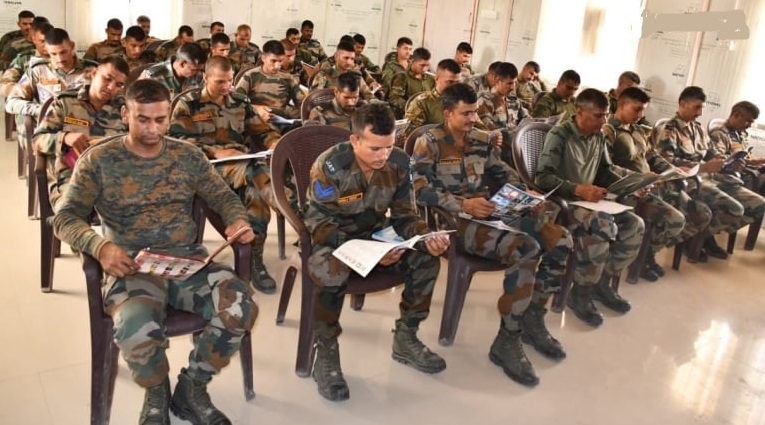 Agneepath Scheme replaced with Sainik Samman Scheme 2024, Defence Minister Rajnath Singh Relaunched Agniveer Scheme
Agneepath Scheme replaced with Sainik Samman Scheme 2024, Defence Minister Rajnath Singh Relaunched Agniveer Scheme
-
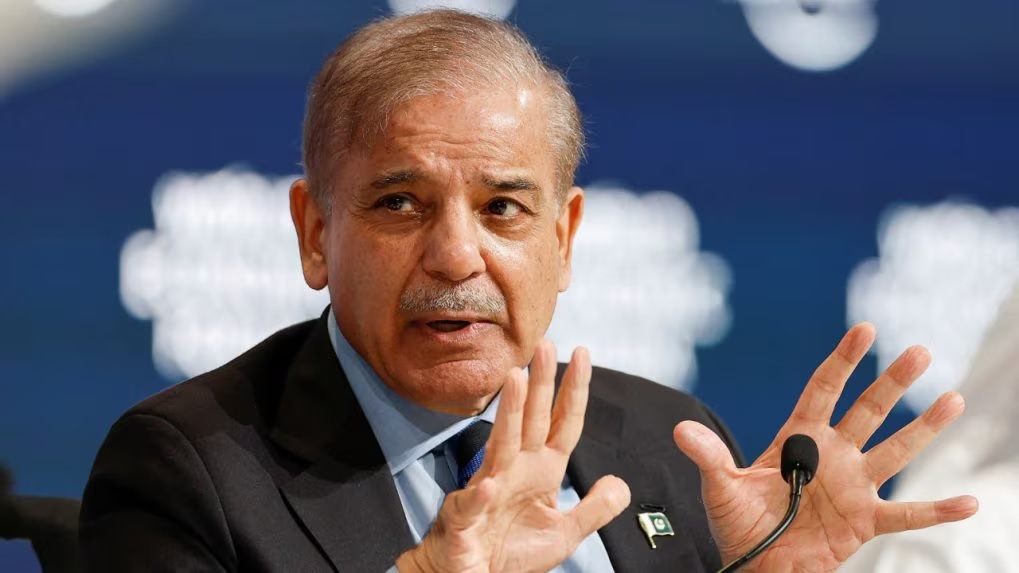 Pakistan Announces 15% Increase in Defence Budget for 2024-25 Amid Economic Crisis
Pakistan Announces 15% Increase in Defence Budget for 2024-25 Amid Economic Crisis
-
 China's Latest DF-31AG ICBM Test: A Strategic Leap in Global Missile Capabilities
China's Latest DF-31AG ICBM Test: A Strategic Leap in Global Missile Capabilities
-
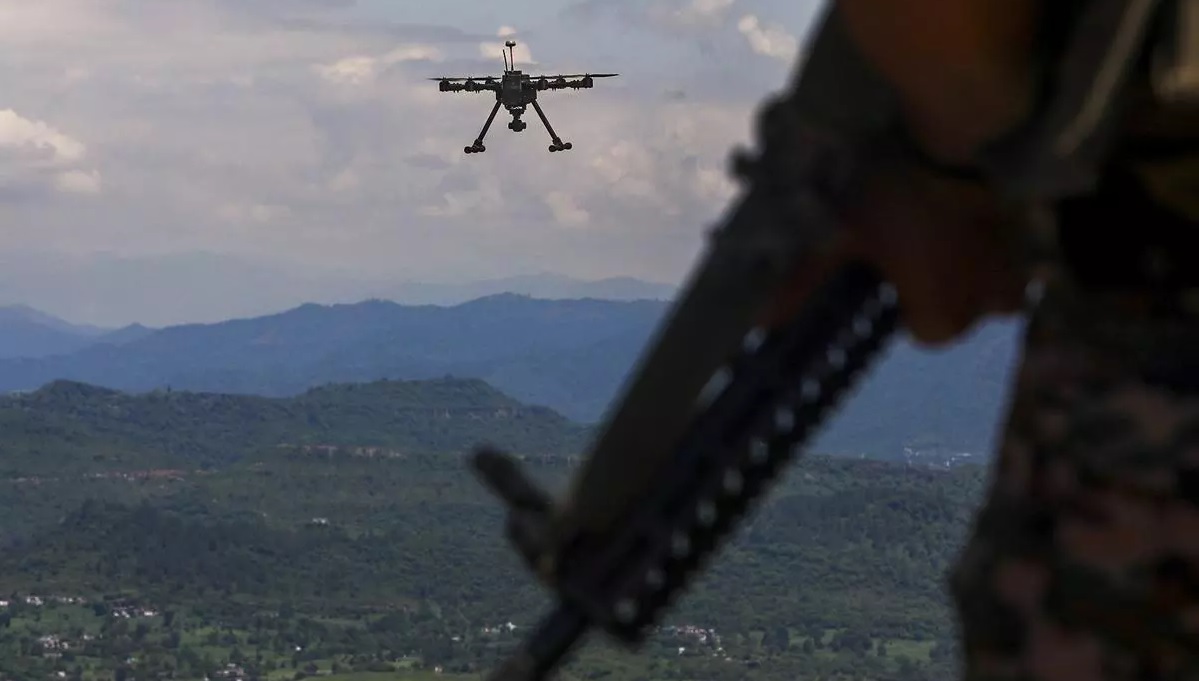 India's Defence Ministry Warns Against Chinese Parts in Military Drones Amid Security Concerns
India's Defence Ministry Warns Against Chinese Parts in Military Drones Amid Security Concerns
-
 China’s Super Radar Detects Mysterious Plasma Bubble Over Giza Pyramids
China’s Super Radar Detects Mysterious Plasma Bubble Over Giza Pyramids
-
 India's Indigenous Kaveri Engine Program with New Focus on Thrust and Performance
India's Indigenous Kaveri Engine Program with New Focus on Thrust and Performance
-
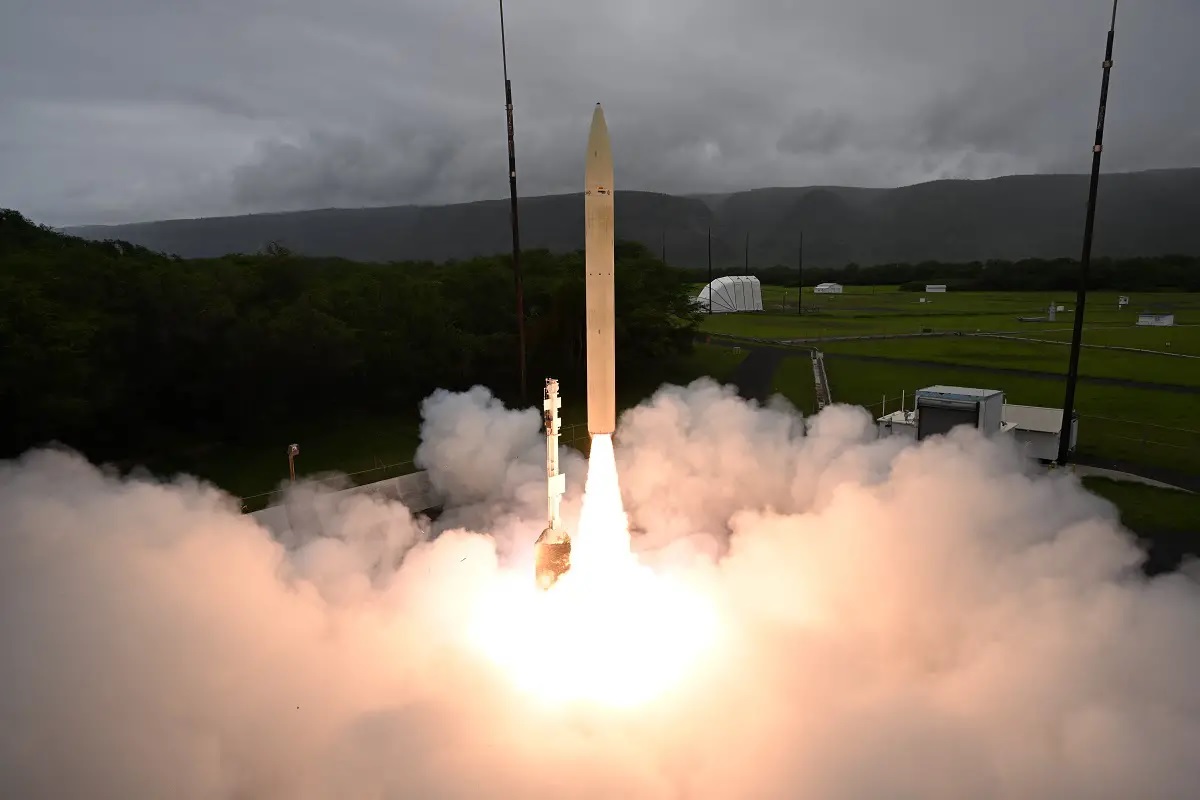 Successful Hypersonic Missile Test by U.S. Department of Defense
Successful Hypersonic Missile Test by U.S. Department of Defense
-
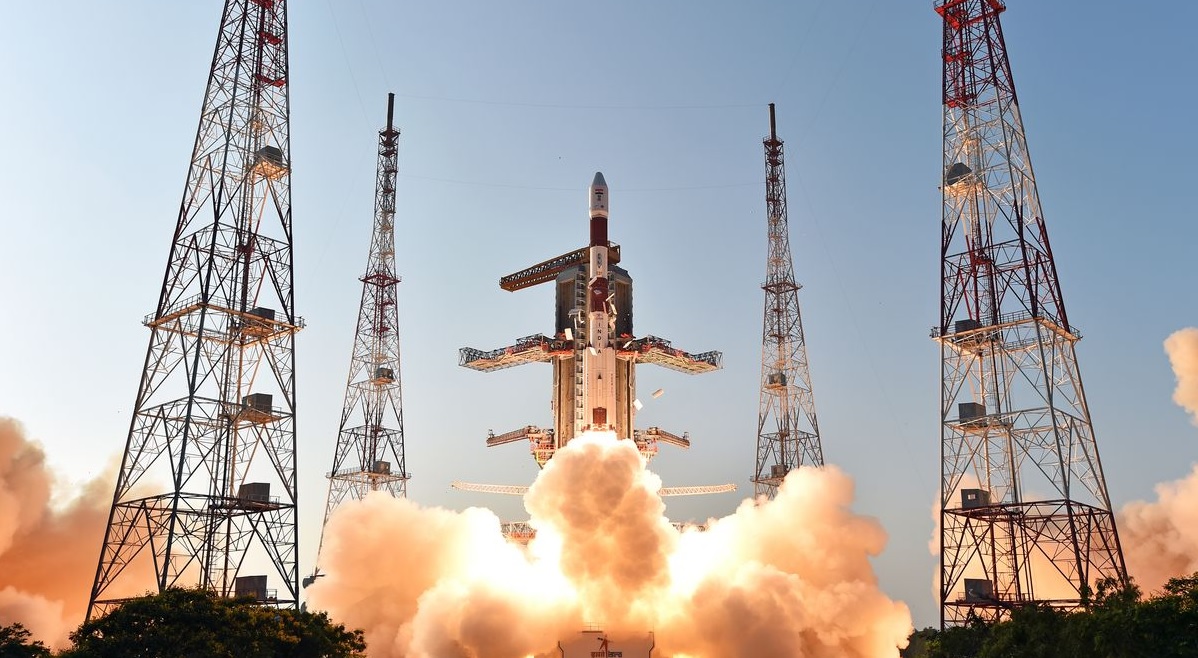 Isro Draws up Ambitious Plan for 2024, says will Launch at Least 12 Missions
Isro Draws up Ambitious Plan for 2024, says will Launch at Least 12 Missions
Top Trending in 4 Days
-
 ISRO to Launch Historic SpaDEX Mission on December 30, 2024: India’s First Space Docking Experiment
ISRO to Launch Historic SpaDEX Mission on December 30, 2024: India’s First Space Docking Experiment
-
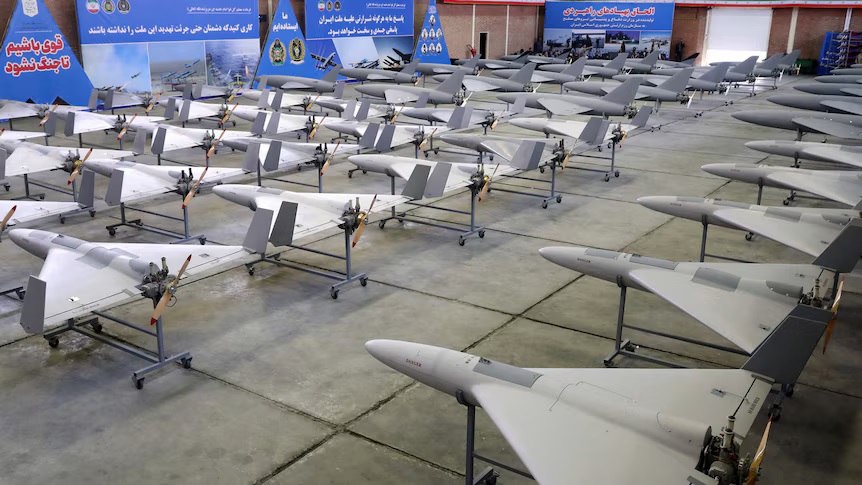 China’s Massive Kamikaze Drone Order Signals Strategic Military Expansion
China’s Massive Kamikaze Drone Order Signals Strategic Military Expansion
-
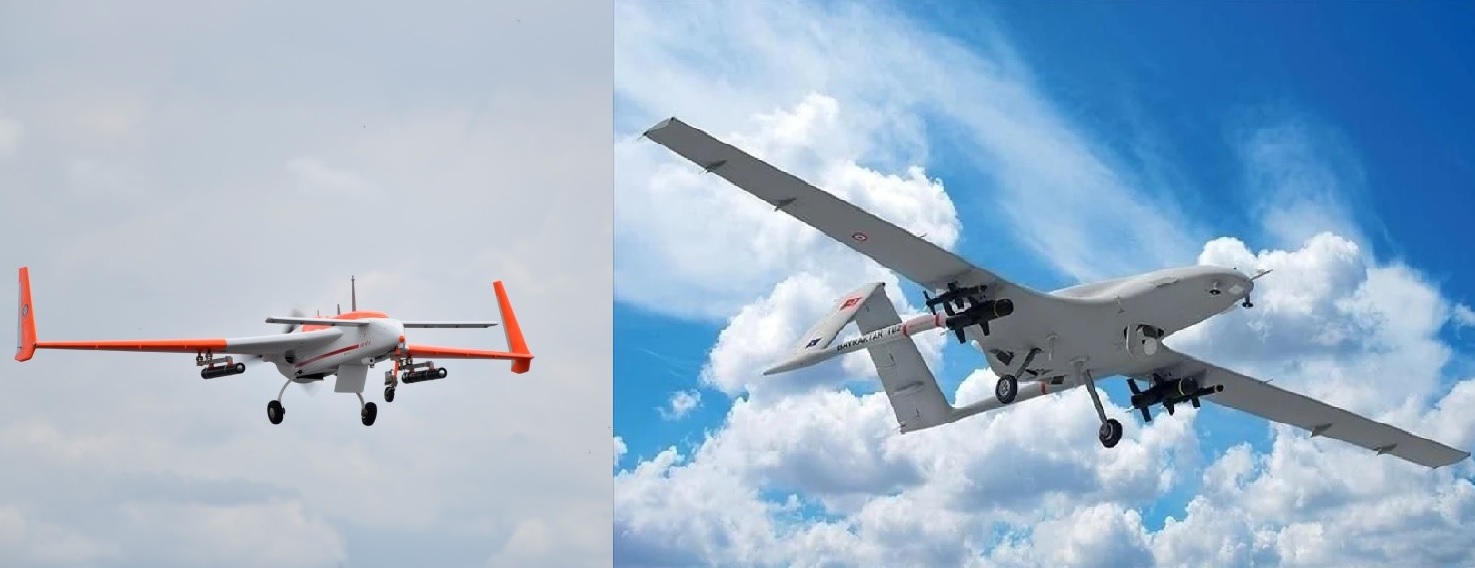 SRUAV-Weaponised vs Bayraktar TB2: A Detailed Comparison of India’s and Turkey’s Armed Drones
SRUAV-Weaponised vs Bayraktar TB2: A Detailed Comparison of India’s and Turkey’s Armed Drones
-
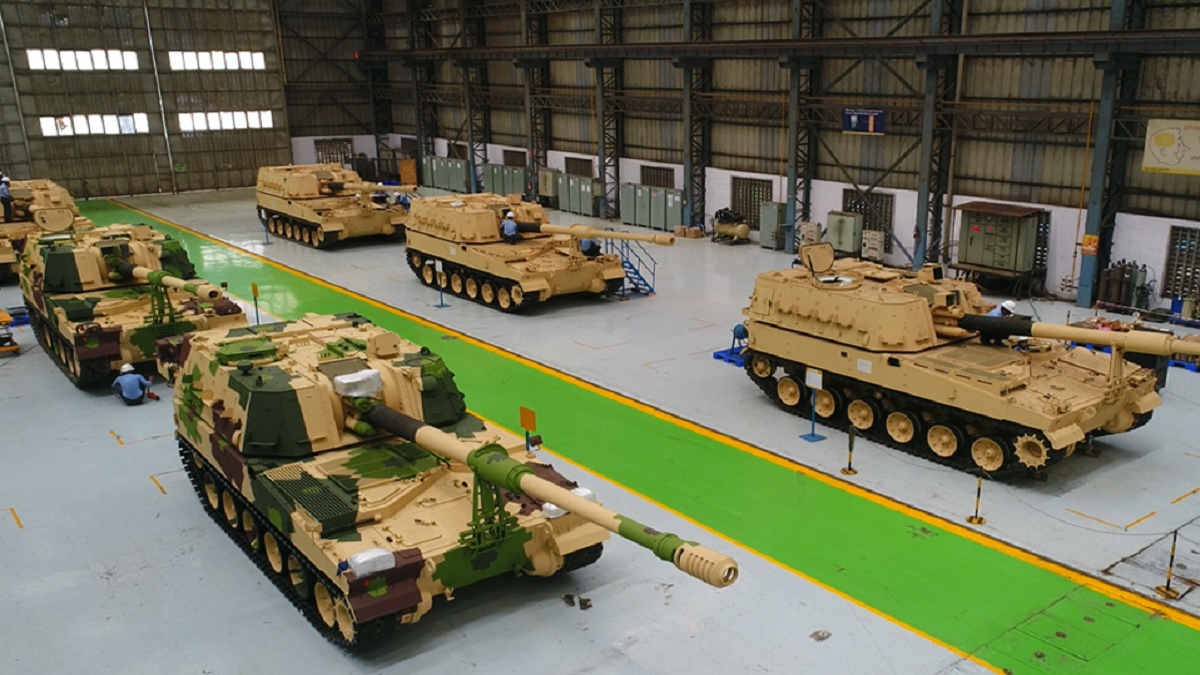 MoD Signs ₹7,628.70 Crore Deal with L&T for K9 Vajra-T Artillery Guns
MoD Signs ₹7,628.70 Crore Deal with L&T for K9 Vajra-T Artillery Guns
-
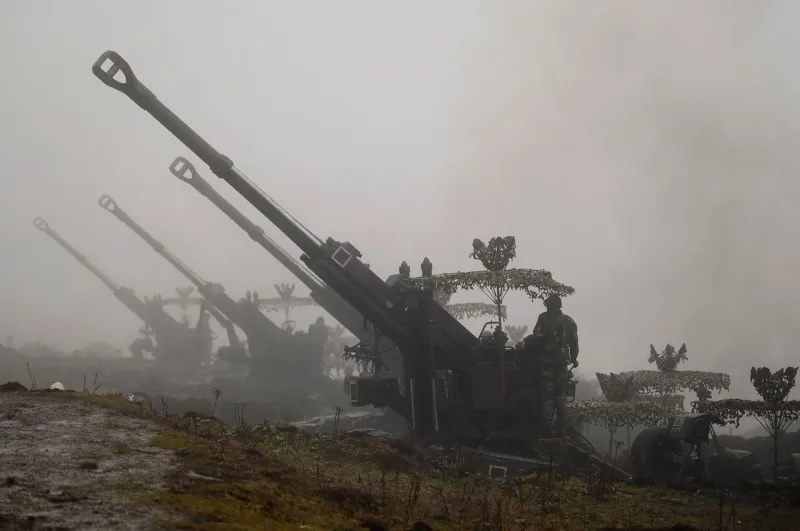 Pentagon Report: China Stations 120,000 Troops, Tanks, and Missiles Near Indian Border
Pentagon Report: China Stations 120,000 Troops, Tanks, and Missiles Near Indian Border
-
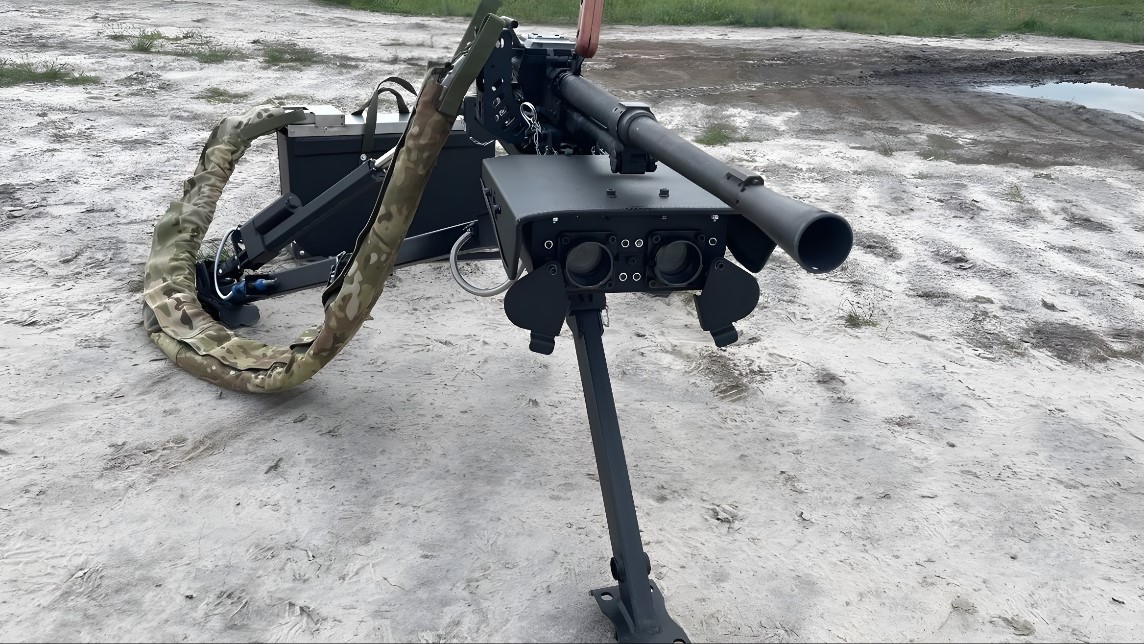 Robotic Wolly Turrets: Ukraine’s New Weapon Against Evolving Battlefield Threats
Robotic Wolly Turrets: Ukraine’s New Weapon Against Evolving Battlefield Threats
-
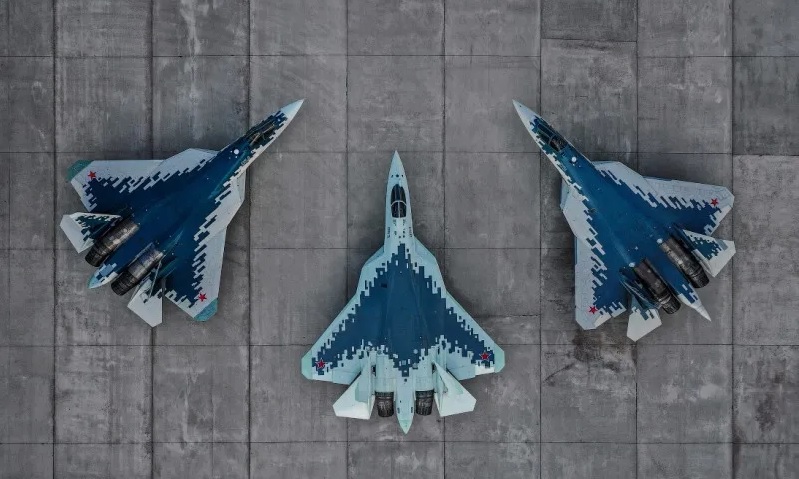 Russia to Propose 70 Su-57E Fighter Jet with AL-51F Engines G2G Deal to India During Putin's 2025 Visit
Russia to Propose 70 Su-57E Fighter Jet with AL-51F Engines G2G Deal to India During Putin's 2025 Visit
-
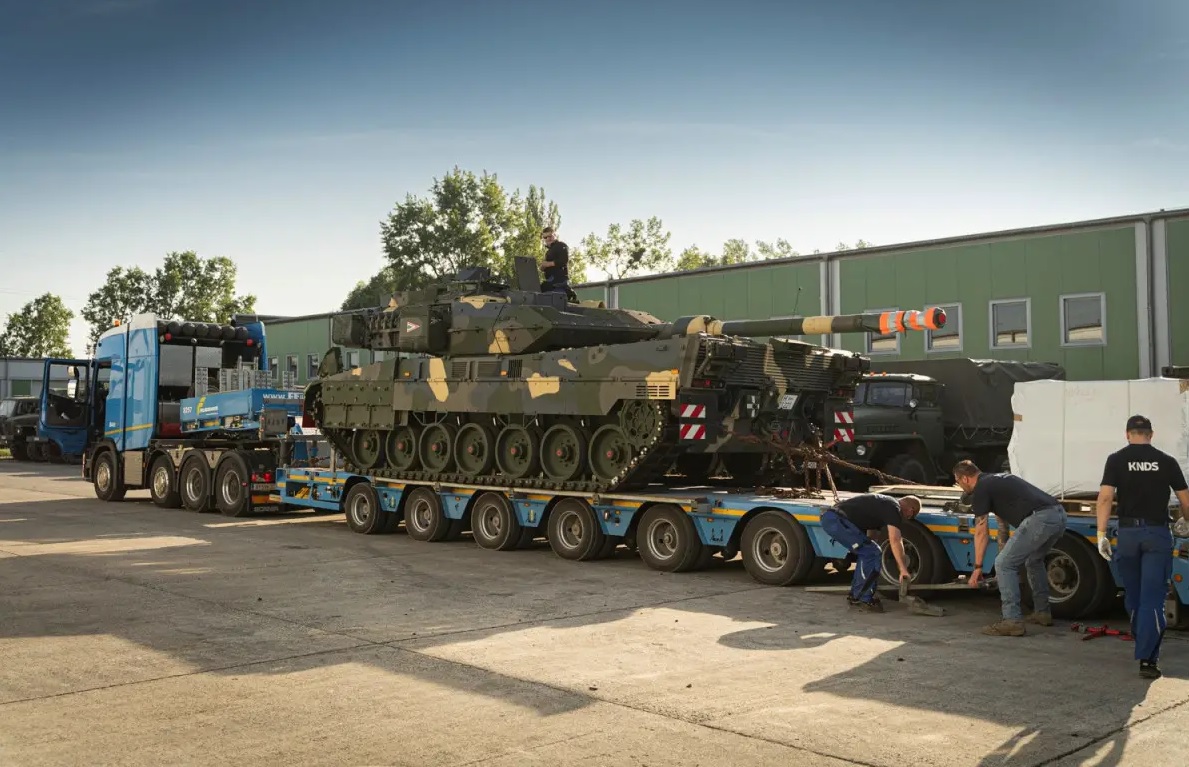 Hungary Receives 31 Leopard 2A7HU Tanks in Military Modernization Push
Hungary Receives 31 Leopard 2A7HU Tanks in Military Modernization Push


